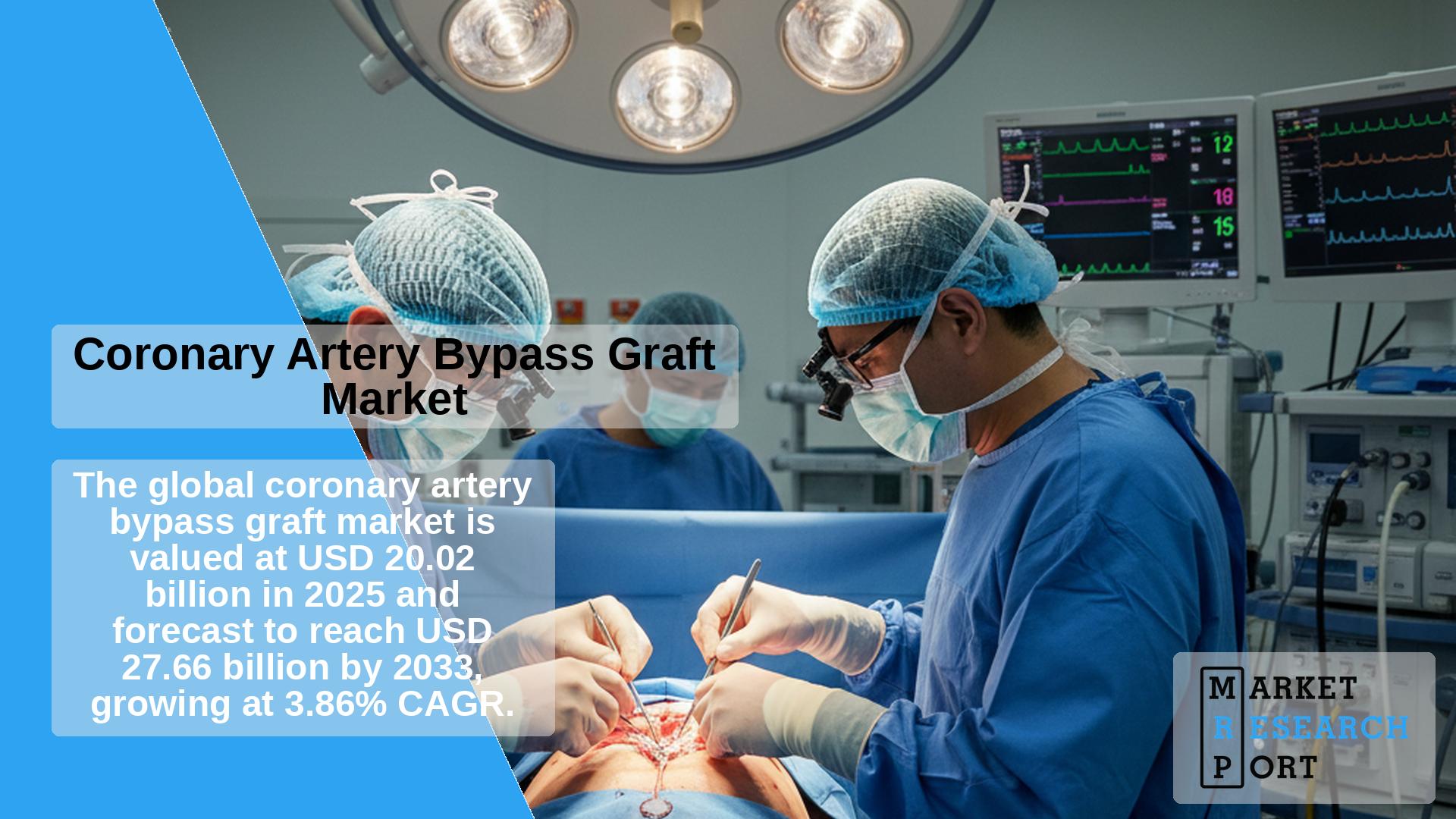
The global coronary artery bypass graft (CABG) market was valued at approximately USD 20.43 billion in 2025 and is expected to reach USD 27.66 billion by 2033, with a compound annual growth rate (CAGR) of about 3.86% from 2025 to 2033. The increasing prevalence of cardiovascular diseases worldwide is a primary factor stimulating market expansion.
The global burden of cardiovascular disease remains considerable, with an age-standardized disease prevalence exceeding 7,000 cases per 100,000 individuals. In the United States alone, coronary artery disease affects around 5% of adults aged 20 and older, highlighting the vast patient population requiring effective treatment. Severe forms of CAD often necessitate surgical intervention via CABG, underscoring its critical role in cardiovascular care.
Technological advancements in graft materials are enhancing procedural durability and patient outcomes. Notably, in 2025, the introduction of Xabg, a synthetic, biorestorative graft, demonstrated encouraging clinical performance by fostering natural vessel growth and sustained patency in multi-vessel disease patients.
Robotic-assisted CABG techniques have emerged as less invasive alternatives, improving surgical precision and patient recovery while reducing operative trauma. Advanced methods such as robotic MIDCAB and totally endoscopic CABG are expanding treatment options.
Healthcare reimbursement is shifting toward bundled payment models like CMS’s TEAM initiative, starting in 2026, which consolidate payments and encourage higher-quality care pathways for CABG surgeries. Furthermore, physician fee schedules have been updated to better align reimbursement rates with procedure complexity and cost, such as the January 2025 revision for arterial graft procedures.
Insurance coverage for minimally invasive CABG approaches, including MIDCAB, is increasing, reflecting broader acceptance and facilitating greater procedural adoption.
Key industry players, including Medtronic, Terumo, and Getinge, pursue growth through mergers, acquisitions, and geographical expansion while adhering to stringent regulatory standards. Emerging alternatives like drug-eluting stents and catheter interventions present competitive pressures by offering less invasive options.
By Method
On-pump CABG accounts for the largest share because it remains the gold standard for complex coronary lesions. Innovations like the FDA-cleared LivaNova Essenz Perfusion System offer patient-specific extracorporeal support improvements.
Off-pump CABG is projected to grow faster owing to reduced complication rates and compatibility with minimally invasive and robotic surgical advances.
By Surgical Procedure
Triple-vessel CABG leads the segment, reflecting the demand among patients with comprehensive coronary artery involvement. Single-vessel procedures show dynamic growth driven by minimally invasive techniques with better recovery profiles.
By End-Use
Hospitals dominate due to comprehensive cardiac care capabilities. Cardiology centers are increasingly important for their focus on innovation and precision surgery, exemplified by centers with outstanding 30-day survival rates.
| Attribute | Details |
|---|---|
| Market Size (2025) | USD 20.43 billion |
| Forecast Revenue (2033) | USD 27.66 billion |
| CAGR (2025-2033) | 3.86% |
| Historical Period | 2021–2024 |
| Forecast Period | 2025–2033 |
| Segments Covered | Method, Surgical Procedure, End-Use, Region |
| Regions | North America, Europe, Asia Pacific, Latin America, Middle East & Africa |
| Countries | U.S., Canada, Germany, UK, Spain, Italy, France, Norway, Denmark, Sweden, Japan, China, India, Australia, Thailand, South Korea, Brazil, Mexico, Argentina, South Africa, Saudi Arabia, UAE, Kuwait |
What is the size of the coronary artery bypass graft market in 2025?
The market is valued at approximately USD 20.43 billion.
What is the expected growth rate of the market?
The market is forecast to grow at a CAGR of 3.86% through 2033.
Which region holds the largest market share?
North America dominates with more than half the global revenue.
What are the major surgical methods used?
On-pump CABG is the predominant method, while off-pump techniques are gaining traction.
Who are the leading companies?
Medtronic, Terumo, Getinge, W.L. Gore, and B. Braun SE are key market players.